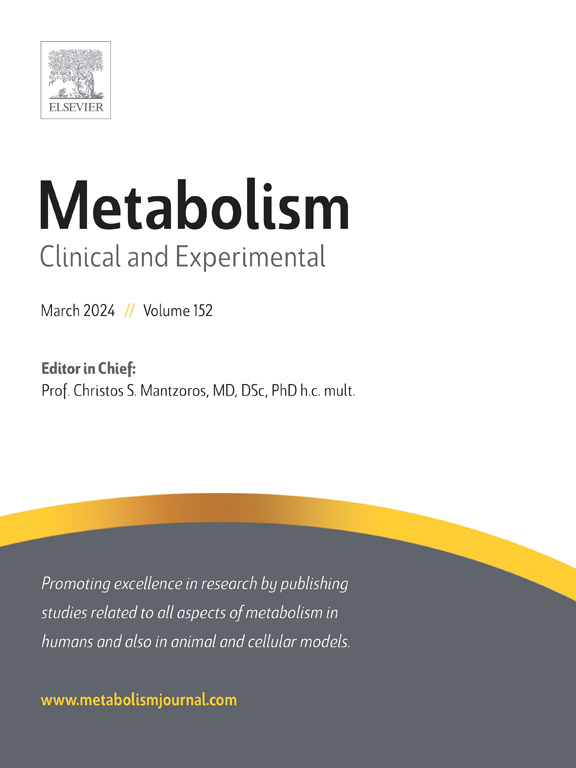Angiotensinogen inhibition concurrently mitigates alcohol-associated hepatic and muscle injury
IF 10.8
1区 医学
Q1 ENDOCRINOLOGY & METABOLISM
引用次数: 0
Abstract
Aims
The organ communication mechanisms driven by alcohol-associated liver disease (ALD) remain inadequately understood. This study explores the endocrine roles of the hepatokine angiotensinogen (AGT) and the renin-angiotensin system (RAS) in ALD.
Methods and results
Hepatokine screening tests revealed that chronic-binge ethanol consumption upregulates hepatic AGT production, triggering downstream RAS activation. Hepatocyte-specific knockout of Agt (AGTΔHep) significantly alleviated ALD-induced liver injury. In organ screening between AGTflox/flox (AGTf/f) and AGTΔHep mice, skeletal muscle exhibited the most pronounced improvement in alcoholic myopathy (AM)-related phenotypes, including reduced muscle mass, enhanced oxidative stress, and mitochondrial dysfunction post-ethanol administration. Mechanistically, the renin-angiotensin axis transmits damaging signals from AGT to their membrane receptor AGTR1 in both hepatocytes and myocytes. Pharmacological inhibition of AGT, renin, and angiotensin-converting enzyme, as well as specific knockdown of Agtr1 in hepatocytes or myocytes, effectively attenuated both conditions. Activation of the counteractive axis of the RAS-AGTR1 pathway, involving Ang (1–7) and its membrane receptor MAS1, ameliorated the alcoholic injury of both the liver and muscle. Conversely, specific knockdown of Mas1 in hepatocytes and myocytes exacerbated these injuries.
Conclusions
Our work demonstrates that hepatokine AGT promotes ALD and AM through the activation of the RAS-AGTR1 axis and the inhibition of the Ang(1–7)-MAS1 axis, offering a foundation for concurrent therapeutic strategies for both diseases.

抑制血管紧张素原同时减轻酒精相关的肝脏和肌肉损伤
目的酒精相关性肝病(ALD)驱动的器官通讯机制尚不清楚。本研究探讨肝因子血管紧张素原(AGT)和肾素血管紧张素系统(RAS)在ALD中的内分泌作用。方法和结果肝细胞因子筛选试验显示,慢性酒精暴饮可上调肝脏AGT的产生,触发下游RAS的激活。肝细胞特异性敲除Agt (AGTΔHep)可显著减轻ald诱导的肝损伤。在AGTflox/flox (AGTf/f)和AGTΔHep小鼠之间的器官筛选中,骨骼肌在酒精性肌病(AM)相关表型上表现出最明显的改善,包括酒精给药后肌肉质量减少、氧化应激增强和线粒体功能障碍。在机制上,肾素-血管紧张素轴将来自AGT的损伤信号传递给肝细胞和肌细胞的膜受体AGTR1。药物抑制AGT、肾素和血管紧张素转换酶,以及特异性敲低肝细胞或肌细胞中的Agtr1,有效地减轻了这两种情况。激活RAS-AGTR1通路的反活性轴,包括Ang(1-7)及其膜受体MAS1,可改善肝脏和肌肉的酒精损伤。相反,在肝细胞和肌细胞中特异性敲低Mas1会加重这些损伤。结论sour的研究表明,肝因子AGT通过激活RAS-AGTR1轴和抑制Ang(1-7)-MAS1轴促进ALD和AM,为两种疾病的同步治疗策略提供了基础。
本文章由计算机程序翻译,如有差异,请以英文原文为准。
求助全文
约1分钟内获得全文
求助全文
来源期刊

Metabolism: clinical and experimental
医学-内分泌学与代谢
CiteScore
18.90
自引率
3.10%
发文量
310
审稿时长
16 days
期刊介绍:
Metabolism upholds research excellence by disseminating high-quality original research, reviews, editorials, and commentaries covering all facets of human metabolism.
Consideration for publication in Metabolism extends to studies in humans, animal, and cellular models, with a particular emphasis on work demonstrating strong translational potential.
The journal addresses a range of topics, including:
- Energy Expenditure and Obesity
- Metabolic Syndrome, Prediabetes, and Diabetes
- Nutrition, Exercise, and the Environment
- Genetics and Genomics, Proteomics, and Metabolomics
- Carbohydrate, Lipid, and Protein Metabolism
- Endocrinology and Hypertension
- Mineral and Bone Metabolism
- Cardiovascular Diseases and Malignancies
- Inflammation in metabolism and immunometabolism
 求助内容:
求助内容: 应助结果提醒方式:
应助结果提醒方式:


